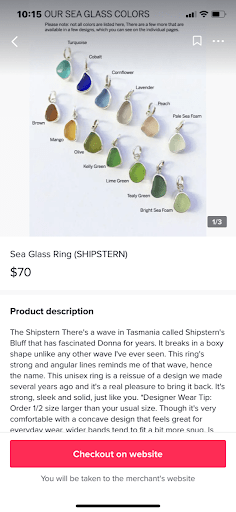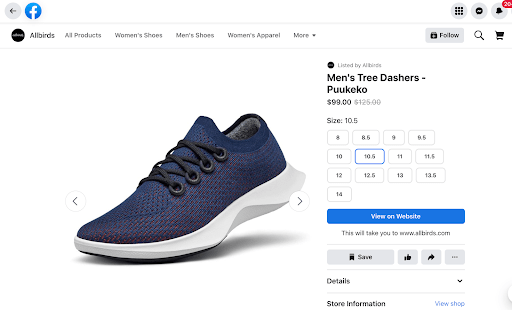The landscape of social commerce continues to change rapidly as a number of the major social platforms add capabilities and functionalities that can be leveraged by e-commerce merchants. Although a few of the social media platforms that we all know dominate the landscape, there are also a number of players in third-party software vendors that are truly increasing the e-commerce capability of social media.
In this post we’ll provide an overview for e-commerce merchants of the major platforms and what their current capabilities are. Contemporary B2C merchants should be leveraging these capabilities. Longer-term it may even be possible for small e-commerce merchants or brands to conduct e-commerce capabilities on social media platforms without even owning an e-commerce platform. The door is even open for e-commerce marketing campaigns to actually replace e-commerce platforms in the near future; as long as their product catalogs and business processes are simple. That model won’t be appropriate for every business but for some B2C businesses it certainly will be.
Instagram is a very important merchandising tool for many brands in B2C. The tools that it allows merchants to use to showcase products while they are being used is comprehensive and they are easy to use.
While Instagram does have the capability to support actual purchasing transactions, the normal approach for most merchants currently is to create a beautiful merchandising experience and then offer a consumer the opportunity to purchase on the website of that brand via a sophisticated integration that often leaves the buyer feeling like they never left Instagram. Instagram also provides merchants with the opportunity to create business accounts that influencers can utilize to share their views of and usage of products. Social influencers have been at work supporting brands with awareness building activities for about a decade now, but it has only been the last few years that platforms like Instagram have provided the capability to drive transactions.
One example of a great instagram-driven purchasing experience is TRADE coffee.
Why consider Instagram for social commerce activities?
- Very broad audience appeal, including baby boomers
- Ease-of-use of the tools
- Highly suitable for consumer brands that are using Instagram as an awareness creation channel and want to try pushing transactions
TikTok
TikTok is the most popular social media platform for younger consumers. The short form video sharing platform provides e-commerce merchants with an opportunity to use social influencers and their own content in ways that truly appeal to a younger audience (and to older audiences that love video sharing and viewing).
Seeing the success that Instagram and Facebook had with an initial set of e-commerce tools, TikTok decided to incorporate similar tools into its platform as well.
Like Instagram, it is possible to set up full transaction capabilities but the normal approach is to leverage the content creation capabilities of the platform and integrate the ability to buy a product from an e-commerce website with an intuitive looking “buy” button and a seamless link to the merchant’s e-commerce site like the screens shown here:
But the current trend is for very large brands or very small businesses to be testing TikTok-enabled commerce merchandising like this. Why? Although the population is large TikTok is not considered a purchasing or “shopping” platform even by younger audiences; it is considered entertainment and therefore e-commerce merchants have learned that it is (currently) a great “awareness-building” platform but not so great at driving transactions (yet). There are outlying success cases, and those will grow but that is where we are today. Bettys Belts is one such example of a small business leveraging TikTok’s platform to drive both awareness and purchasing.
Why consider TikTok for social commerce activities?
- Brand-supporting video experiences that support campaigns targeting audiences with ages below 34
- Testing product-specific purchasing campaigns as a part of a mix with other social media (currently working best with retailers that have a brick and mortar presence)
Facebook was the first social media platform to integrate e-commerce tools into its offering. The first offering was the capability to set up a store-like catalog on the platform on a company page. Today the offering is very similar to Instagram, although it is presented within the Facebook interface. Both Instagram and Facebook e-commerce tools are managed within the Facebook Ad Manager which makes merchandising on those two platforms at the same time fairly easy; but you will need a Facebook Business Page and an Instagram Business Account within each platform. You can target customers by location, age, and interest (for both platforms) and so the preferred commerce metaphor right now remains setting up a “storefront” on Facebook, testing highly targeted campaigns to drive awareness to that storefront and then have customers “check out” with one of three methods, the most popular method of which still remains linking through to the e-commerce platform. One alternative method is “checkout through messaging” which is designed to work like an interface with a customer service rep at a store. Lastly, the “Checkout on Facebook” method remains viable for merchants that want to focus on this channel and FB being their merchant of record.
The selling fee on Facebook is a hefty 5% (compared to 2.5% using Shopify payments) so it’s likely that the merchants using FB as Merchant of Record will continue to be program or single product focused for the near future.
New Zealand sustainable shoe brand, Allbirds, are a great example of a model Facebook purchasing experience.
Why consider Facebook for social commerce activities?
For many consumer product companies, Facebook is ideal because it allows for an e-commerce catalog experience within FB along with checkout and / or “link to webstore.” Facebook supports full scale imagery, variants and configurations of consumer products like shoes.
- If you are targeting an older demographic including ages 40s, 50s and 60s, Facebook is ideal
- Shopify and BigCommerce have relatively easy Facebook integrations allowing for control over the associated products you want to feed into the platform and control over how they look.
Pinterest was the web’s mood board for many years, giving designers, creative professionals, and serious hobbyists a way to share pictures, “pins”, and categorize them in unique ways. Now they have features that enable full-on social commerce activity including Shoppable Pins with associated functionality that will inform the user of variation availability, price changes, and more.
This recently-added “shoppable pins” functionality followed the rollout of a number of features that promoted e-commerce or omni-channel commerce activities initiated from the platform, according to a recent article in Digiday. If you are a merchant and you are interested in leveraging Pinterest, read that article first and browse organizations like Etsy that are having success with Shoppable Pins. You will see how specialty merchants and retailers can leverage organic pins to induce organic and paid shopping.
Who Should Consider investing in a commerce / shoppable experience on Pinterest now?
If you are a business or merchant using Pinterest as a channel to build awareness and you are a retailer associated with fashion, decorative arts, and interior design and home furnishings, you may be able to leverage the social commerce features of Pinterest and you should consider adding it if you are not using it already.
A Shoppable Pin by Etsy promoted on Pinterest:
The Bottom Line
Most B2C e-commerce merchants now have some social commerce presence with the vast majority choosing either Instagram or Facebook to start depending on their target market. All of the major social media platforms are moving towards a model where they can support transactions. Soon, we suspect social commerce will remind many of the paid TV programming model, where costs for the transaction are high but the audience size and ability to focus will prove a viable model for companies that have the budgets to focus on specific product campaigns where the desire is sales.
For the short-term, experienced e-commerce merchants that sell sizable catalogs will leverage the audiences of the social networks and continue to drive to their stores mixing organic and paid programs that meet their ROAS metrics.
In the near future, we’ll be publishing an article on developing a social commerce strategy that will dig deeper into identifying and executing the right mix of social commerce depending on your budget and what you are selling.







